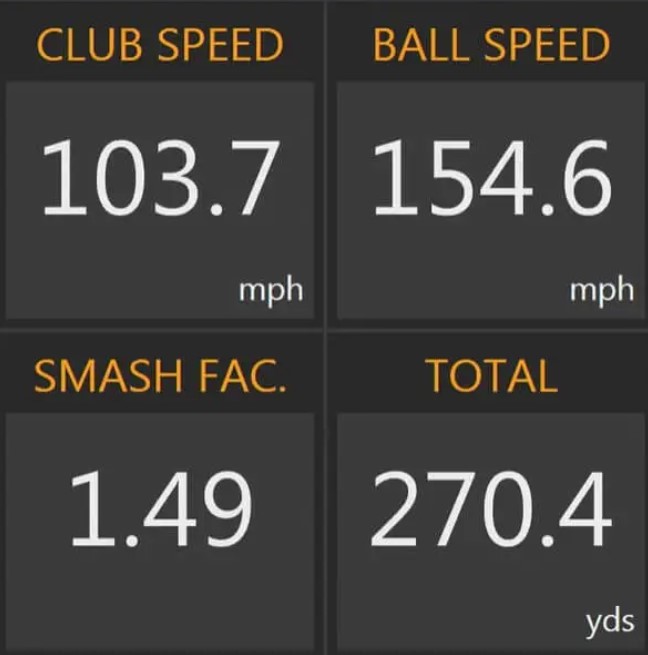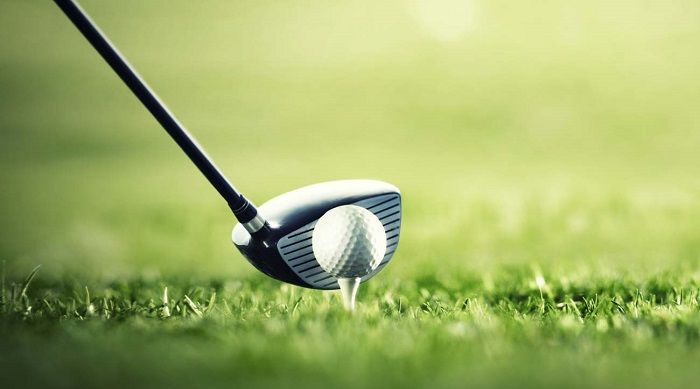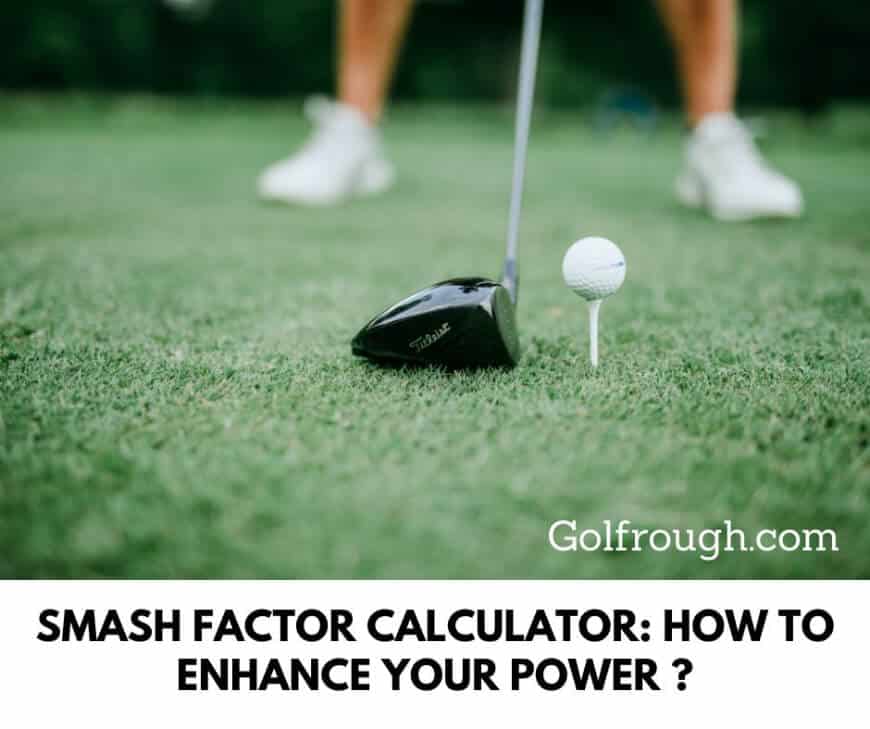Golf might be a fun game to some, a terrific stress reliever to others, and an exciting livelihood to pros. But do you know that the game is a matter of smashing the golf ball to keep the play moving? Also, some may not be aware that the smash factor plays a vital role in keeping your distance longer.
In smashing the ball (pardon the pun), you need a golf club to hit the ball in an intended direction. The smash factor is simply the ratio between the ball and club speeds. It means ball speed divided by club speed. But how do you know your smash factor? You may use a smash factor calculator.
You can see below the quick and easy-to-use online smash factor calculator. The calculator is one of your ways to increase swing power. How? Keep on reading this worthy write-up so you will know! Let’s go!
Smash Factor Calculator
Are you already reaping the benefits of fast swing speed? Or are you still struggling? Do you still need to know more about the smash factor calculator? Yes, you should.
The calculator may not be the surest way, but it will help increase the power of your shots. The idea is to determine the relationship between your swing speed (club head) and ball speed. Also, calculating your golf handicap-adjusted score might be harder than calculating your smash factor.
Similar to the golf shaft flex calculator: the smash factor calculator is a scientifically-proven tool for quantifying the energy a golf club can transfer into the ball.
Once you have the two variables (club head speed and ball speed): you may measure the energy you should exert in hitting the ball next time.
Many tech-savvy golfers purchase golf launch monitors, where they can determine their smash factor. But if you only need to know your smash factor quickly, here it is.
Later, we will explain this tool and the ideal smash factor for every golf club.
Understanding Smash Factor (SF)
So, you now understand that the smash factor calculator measures the ratio between the ball speed and the club head speed: It follows that the higher the smash factor, the more power you are transferring energy from the club to the ball.
To illustrate: if you have a club head speed of 90mph delivering a ball speed of 135mph, it yields a smash factor of 1.5. The ratio is a unit less, but like the compression ratio, experienced golfers understand the value.
The ratio differs in every golf club type, but your club head speed defines your ball speed in each club. This simple calculation reflects your smash factor in every golf club you use.
The metric might be an effective tool for fast hitters, but it may not be crucial in club-fitting drivers. Nevertheless, knowing your smash factor keeps your ball rolling with power.
What Makes Smash Factor Crucial in Many Aspects?
The smash factor lets you decide whether to slow down or level up your swing. Although you need a higher SF ratio in most shots (especially drivers), you can always control your smash factor.
The smash factor is essential because it impacts the ball directly, depending on your swing speed. The SF is directly proportional to your swing speed: you may increase yours up to 1.5, which is the ideal ratio.
The smash factor of 1.5 is the gold standard in golf. Everyone wants to get this, but not everybody can do it. Hitting the ball with a higher smash factor gives you a farther distance.
How One Improves The Smash Factor?

Here are some drills you can do to boost your smash factor.
1. First Drill: Center Face Hits: 3-Tee Drill
You can do this drill as long as you like.
- Put three tees on the ground (at least 5 inches apart). Align the tees in a straight line.
- Put the golf ball on the middle tee.
- Hit the golf ball on the middle tee and replace it with another one.
- Do the drill to your liking and try to avoid the outside tees.
- However, do not stay in the same spot once the ground becomes full of divots.
2. Second Drill: Draw, Fade, & Straight
Right and left-handed golfers should learn how to work the ball from left to right and vice versa. This drill also uses the driver but with only one tee. Pick the most convenient spot on the course and do the following:
- Hit three draws
- Hit three fades
- Hit three straights
Do these drills several times until you see improvement where you can feel your driver’s sweet spot.
3. Third Drill: Impact Tape/ Impact Spray
The impact tape or impact spray drill is an effective tool in determining whether you hit the sweet spots of the ball and the club head.
When using a wedge or an iron, ensure the grooves are cleaned with a club brush and dried.
- Stretch the tape in the middle of the club face.
- Hit the ball while the tape adheres to the club head center.
- In every hit, check the tape. The ball’s dimples leave imprints on the tape. You can see in the club head where you are hitting the ball.
How to Improve Smash Factor with a Driver?

Driving off the tee takes so much power on every golfer. It is the beginning of an awesome journey toward a challenging game. Your shot using a driver can still improve if you are unsatisfied. Here are ways of improving your smash factor off the tee.
1. Factor #1: Control and Clubface Bearing
In attaining a longer distance and better smash factor, your every swing should be linear almost without side or back spins. When unaware of whether the club face opens or closes during impact, you can use a golf alignment stick.
The magnetic alignment training rod, like the TuhooMall sticks may help you visualize or align golf shots.
2. Factor #2: Center Hits
No matter how powerful your swing is, missing the club face and golf ball center lessens its speed. Body stance has something to do with it.
Try setting up your body’s mass center over your feet. In this posture, you are balanced and stable. At this stance, you can hit the club head in the middle: as well as the center of the ball.
3. Factor #3: Angle of Attack (AoA)
Either a thin or thick attack angle is not an assurance your club head speed may enhance. The ideal setup is having a golf club loft nearer the angle of attack. You can optimize the loft and the AoA to keep them at bay. This setup gives you more chances of enhancing your smash factor.
Smash Factor Chart for Types of Clubs
The chart below shows the smash factor equivalent of each golf club and other parameters. The carry distance is an estimate, but I believe it is the closest we can get. The succeeding analysis describes the three major classifications of distance predictions for pros, women, and men.
| Type of Club | Club Speed (mph) | Angle of Attack (AoA, degree) | Ball Speed (mph) | Smash Factor | Launch Angle | Spin Rate (rpm) | Land Angle (degree) | Carry Distance (yards) |
| Driver | 113 | -1.3° | 167 | 1.48 | 10.9° | 2686 | 38° | 275 |
| 3W | 107 | -2.9° | 158 | 1.48 | 9.2° | 3655 | 43° | 243 |
| 5W | 103 | -3.3° | 152 | 1.47 | 9.4° | 4350 | 47° | 230 |
| Hybrid 15°/18° | 100 | -3.5° | 146 | 1.46 | 10.2° | 4437 | 47° | 225 |
| 3-Iron | 98 | -3.1° | 142 | 1.45 | 10.4° | 4630 | 46° | 212 |
| 4-Iron | 96 | -3.4° | 137 | 1.43 | 11.0° | 4836 | 48° | 203 |
| 5-Iron | 94 | -3.7° | 132 | 1.41 | 12.1° | 5361 | 49° | 194 |
| 6-Iron | 92 | -4.1° | 127 | 1.38 | 14.1° | 6231 | 50° | 183 |
| 7-Iron | 90 | -4.3° | 120 | 1.33 | 16.3° | 7097 | 50° | 172 |
| 8-Iron | 87 | -4.5° | 115 | 1.32 | 18.1° | 7998 | 50° | 160 |
| 9-Iron | 85 | -4.7° | 109 | 1.28 | 20.4° | 8647 | 51° | 148 |
| PW | 83 | -5.0° | 102 | 1.23 | 24.2° | 9304 | 52° | 136 |
Golf Club Forecast Distance- Men
Men have the challenging smash factors when they use the irons. Most male golfers may have issues with these irons, especially with 2 to 5- irons, especially alignment and swing speed.
Golf Club Forecast Distance- Ladies
It is more logical that lady golfers strike the ball at a shorter distance. But they smash the ball with more accuracy than men.
Golf Club Forecast Distance- Seniors/Pros
Professional golfers have a high smash factor from the driver to the 9-iron. The majority of newbie men even start at an almost average smash factor from the driver. While those becoming seniors still have an average smash ratio in most clubs.
Mean Smash Factor Chart for Every Club: PGA Tour
The PGA Tour statistics give an average smash factor value of 1.48, with a 94mph club speed (for a driver). The attack angle is at 3 degrees. This pertains to all tour players. All the players show excellent performances.
Moreover, the 6-iron shows a smash factor of 1.41 when hit with a 78mph club speed. The smash factor for most wedges is 1.28.
Mean Smash Factor Chart for Every Club: LPGA Tour
The LPGA Tour smash factor for most drivers is also the same as the PGA Tour average: 1.48. Statistics also show that more tour players have fast swing speeds. From 3-wood to 7-wood, the smash factor ranges from 1.47 to 1.45, typically lower than many PGA Tour players.
| Type of Club | Club Speed (mph) | Angle of Attack (AoA, degree) | Ball Speed (mph) | Smash Factor | Launch Angle, degree | Spin Rate (rpm) | Land Angle (degree) | Carry Distance (yards) |
| Driver | 94 | 3.0° | 140 | 1.48 | 13.2° | 2611 | 37° | 218 |
| 3W | 90 | -0.9° | 132 | 1.47 | 11.2° | 2704 | 39° | 195 |
| 5W | 88 | -1.8° | 128 | 1.47 | 12.1° | 4501 | 43° | 185 |
| 7W | 85 | -3.0° | 123 | 1.45 | 12.7° | 4693 | 46° | 174 |
| 4-Iron | 80 | -1.7° | 116 | 1.45 | 14.3° | 4801 | 43° | 169 |
| 5-Iron | 79 | -1.9° | 112 | 1.42 | 14.8° | 5081 | 45° | 161 |
| 6-Iron | 78 | -2.3° | 109 | 1.39 | 17.1° | 5943 | 46° | 152 |
| 7-Iron | 76 | -2.3° | 104 | 1.37 | 19.0° | 6699 | 47° | 141 |
| 8-Iron | 74 | -3.1° | 100 | 1.35 | 20.8° | 7494 | 47° | 130 |
| 9-Iron | 72 | -3.1° | 93 | 1.28 | 23.9° | 7589 | 47° | 119 |
| PW | 70 | -2.8° | 86 | 1.23 | 25.6° | 8403 | 48° | 107 |
Tool For Converting Smash Factor to Ball Speed
You can use the ball speed calculator (6) below if you know your smash factor and club head speed. The ball speed is the product of the smash factor and the club head speed (SF X Club head speed).
Read more: Best Golf Balls for Slower Swing Speeds
FAQs
The spin loft and the strike point have something to do with the low smash factor. The striking point happens when you strike the ground before hitting the ball.
The spin loft, on the other hand, is the combination of the attack angle and the club path. It affects ball impact, spin rate, and direction.
It is the standard (1.45) smash factor in golf. It is also the median value for many pleasure golfers.
I do believe that having a smash factor of 1.5 is the best. It is above average. Many amateurs have 1.42 smash factors.
A smash factor of 1.5 is already high. Experts also consider this the perfect value for a smash factor.
The ideal smash factor for a 9-iron is 1.28: Most PGA Tour and LPGA Tour players have this value.
You can attain a smash factor of 1.5 if you put the club face and path together while finding the club center. You may lose ball speed if you hit the ball out of the heel or toe. Losing the ball speed will lessen your smash factor.
The 7-iron may have a good smash factor from 1.3 to 1.46. An average 7-iron smash factor of 1.4 is ideal for most experienced golfers.
Conclusion
The smash factor calculator is one of the tools for boosting swing speed, which may enhance distance.
Although a 1.5 smash factor is the ‘holy chalice’ in golf, the feat is seldom achieved, even by tour pros. However, aiming for a good smash factor is always better than aiming for nothing. A 1.42 average for a driver is one of the best for average golfers.
Read more: Adjusted Gross Score Calculator To Fine-Tune Your Golf Game
Matt Stevens is the founder of Golfrough.com. He holds a Postgraduate in Sports Marketing and has played golf since he was four years old. Having experienced every high and low golf has to offer, his writing helps the average golfer avoid the mistakes he has made in 28-years on the course.

